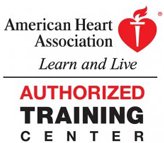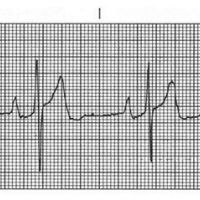Philips Onsite AED Program Checklist
**If you are located in King County and purchased your AED through CPR Seattle, we will complete these items for you.
□ AED Site Coordinator
- Please select an AED Site Coordinator for your company.
- The AED Site Coordinator is responsible for:
- Filling out paperwork to set up the AED program
- Maintaining AED Records
- Performing AED Maintenance Checks
- Staff Preparedness / Training
- Pad and Battery Replacement
- Post-event Reporting
□ Registration**
- Your county may require you to register your AED; please check with your jurisdiction.
- If you are in King County, CPR Seattle will register your AED for you. King County will enter your AED in a database so that 911 dispatchers can locate it in an emergency.
□ Medical Direction / Prescription - Outside King County
- AEDs are medical devices regulated by the FDA. Federal Law requires that a physician provide medical direction and a prescription to the person or entity purchasing one. The Onsite is the only AED unit on the market approved for "over-the-counter" use and no prescription is required however you are still required to obtain medical direction.
- Your county may offer this service for free; please check with your local EMS to see if you can obtain medical direction. If not, you may have to pay for these services through a providing company.
- Check in with EMS in your county to learn about any additional requirements they may have.
□ Medical Direction / Prescription – Inside King County**
- King County provides businesses and individuals AED medical direction and prescriptions free of charge. CPR Seattle will register your AED and request medical direction for you upon receipt of your purchase.
- By requesting medical direction from King County EMS: You must follow the protocol as listed in the Seattle-King County Community Responder CPR-AED Program document. In brief, you must comply by:
- Registering your AED online with King County EMS.
- Completing a Washington State-approved CPR training program (CPR Seattle’s American Heart Association curriculum is approved by Washington State).
- Maintaining records of CPR/AED training (CPR Seattle maintains backup training records for those who have trained with us).
- Reporting any AED event to King County EMS.
- Contacting King County EMS when your site information changes.
- By registering your AED with King County EMS:
- Your AED will be entered in the dispatch database. In the event someone at your facility calls 911, the dispatcher will instruct the caller to locate the AED.
- By requesting a prescription:
- You will receive a letter via email granting you a prescription for your AED unit. The Onsite does not require a prescription.
- By requesting medical direction from King County EMS: You must follow the protocol as listed in the Seattle-King County Community Responder CPR-AED Program document. In brief, you must comply by:
□ CPR Seattle Data Tracking**
- CPR Seattle keeps track of your CPR training records in addition to your AED information.
- A CPR Seattle staff member will activate your account and issue you a password (which you can change once you are logged into the system). If you don't have an account, please send us an email.
- Visit the link at the bottom of the CPR Seattle home page that says “Login” or go directly to portal here
- To change any information in your profile simply send an email to cpr@cprseattle.com and we will gladly update your account.
□ AED Assembly & Test
- Firmly pull the green tab from behind the battery to start AED self-test. Listen for a beep!
- When instructed press shock button firmly.
- In about a minute, the AED will say “ready for use”.
- If the AED is in the carry case, please take it out and turn it over to record the date on the provided sticker. The battery will expire 4 years from that date.
- Place the AED back in the carry case and ensure that the green light is flashing.
- Your AED is now operational.
- Turn the AED over and write the date you activated the unit on the provided sticker.
- If you purchased a spare AED battery, we recommend you put it in the AED unit to test it.
- Please let CPR Seattle know the date you activated the unit so we can properly track your information and remind you when your battery is going to expire.
- Please note, your AED will perform daily, weekly, and monthly self-checks. If an issue is present the unit will give an audible “chirp” alert. If there is a problem with your AED (other than expired pads or battery) please contact the technical support number in your owner’s manual.
□ Your AED Components
- Adult Pads: Use for patients over 8 years of age and weighing more than 55 pounds.
- Pediatric Pads: Use for patients 1-8 years old weighing less than 55 pounds (if you think a child might be 8 or older but are not sure, use the adult pads).
- Pad Release Lever: Allows you to quickly change to your spare set of pads, pediatric pads, or your replaced pads.
- Information Button: The “i” button will flash when your AED has information to provide to you (for instance, after a shock is given, it will flash, and you can press it if you wish to be coached through giving compressions and breaths).
- Data Recording: Internally records up to 15 minutes of event data (please do not turn on the AED frequently as this uses up the available recording time).
- User manual (please read), Quick Setup guide, Inspection Log and Maintenance stickers.
- Prep Kit Contents
- Emergency Shears: used for removing all clothing, including bra, from patient.
- Absorbent Dry Towel: AED pads must be placed on dry skin. Use the towel to wipe the patients’ skin dry before applying.
- Medical Prep Razor: AED pads will not adhere to a hairy chest. Use the medical prep razor to shave a hairy chest before applying pads.
- CPR Mask: The CPR mask provides a barrier between the rescuer and patient, and aids in creating an effective seal over the mouth and nose to deliver rescue breaths.
- Nitrile (non-latex) gloves (2 pairs): Gloves protect the rescuer from bodily fluids. Use two pairs in situations where they might tear (ex: broken glass present).
□ AED Placement
There is no single formula to determine the best placement of an AED, or the optimal number of AEDs in the workplace, but please consider the following points:
- Response time: The optimal response time is 3 minutes or less from the moment a victim collapses to when the AED applies a shock.
- Demographics of the workforce: Because the likelihood of an event occurring increases with age, consideration should be given to the age profile of the workforce.
- Visitors: Facilities that host large numbers of visitors are more likely to experience an event, and an appraisal of the demographics of visitors should be included in an assessment.
- Specialty areas: Facilities where strenuous work is conducted are more likely to experience an event.
- Physical layout of facility: Response time should be calculated based upon how long it will take for the responder with an AED walking at a rapid pace to reach a victim. Large facilities and buildings with unusual designs, elevators, and campuses with several separate buildings and physical impediments all present unique challenges.
- If you are installing a wall cabinet for your AED, please note that ADA guidelines state: “For an unobstructed approach, the maximum forward reach to this equipment, is 48 inches above the floor. It may be lower”. Also, “objects projecting from walls with their leading edges between 27 inches and 80 inches above the finished floor shall protrude no more than 4 inches into walks, corridors, passageways, or aisles”.
- Read the CPR Seattle blog post for additional information.
□ AED Maintenance
The AED Site Coordinator must perform periodic maintenance checks at a predetermined interval according to manufacturer’s specifications found in the user manual. Maintenance checks can include:
- Checking status indicator to ensure light is flashing green (weekly)*
- Checking the exterior of the AED for any damage (monthly)*
- Checking AED pad(s) expiration date(s) (monthly)*
- Checking supplies for damage and expiration date(s)
- Making sure all employees (old and new) know the location of the AED and ensuring that it is still easily accessible to all
- Ensure all responders (including new staff) have up-to-date CPR/AED training
- Install any mandatory or optional programming updates to the AED unit. CPR Seattle will notify all AED Site Coordinators if an update is available.
CPR Seattle will send the AED Site Coordinator on record a reminder email two months before your battery and pad expiration. Order your new batteries and pads by calling or emailing CPR Seattle.
- Pads need to be replaced every two years (see expiry date listed on pads)
- Batteries are good 4 years from the date you activated the AED.
□ Battery Disposal
AED manufacturers utilize a lithium battery that must be disposed of properly. Please visit the following King County website for businesses that can recycle batteries for you:
- King County Hazardous Waste Disposal Stations, click here.
- King County Traveling Wastemobile, click here.
- For Friendly Earth located in SoDo (minimal fee), click here.
□ Staff Preparedness
CPR Seattle recommends reviewing CPR/AED protocols upon receipt of your AED in addition to reviewing protocols at quarterly staff meetings. This will help to insure that everyone is prepared for an emergency. Some suggestions for your meetings include:
- Review CPR/AED steps
- Notify your staff if you have a spare battery pack available with your AED.
- Conduct scenario training exercises
- Review contents of AED unit and prep-kit
□ Post-event Reporting: After Use in an Emergency
Assessing the clinical data from AED units after their use in a sudden cardiac arrest (SCA) is invaluable. If you have to use your AED, please see the very important information below.
- DO replace the pads. The device will make a chirping sound until the pads are replaced.
- DO NOT remove the battery. If you remove the battery all data will be erased.
- Contact the EMS Program Manager for your county and arrange for EMS to come to your site to obtain the event data download (required for King County and Seattle). In King County, call 206-296-4693 or email aed@kingcounty.gov.
- Install new pads and ensure AED is fully functional.
- Once your EMS has obtained the event data, delete the data from your AED unit by removing and reinstalling the battery to allow 15 full minutes of recording for any future cardiac event.
- Evaluate CPR and AED response and brief your staff on improvements for future response.
- Provide emotional support to rescuers and staff.
- After providing event data to EMS and Philips, delete the data according to HIPPA requirements.
- Call Philips Technical Support with any remaining post-event questions regarding AED functionality.
□ Public Awareness
- We encourage you to let your neighbors know you have an AED!
- The PulsePoint AED registry is one of the largest and fastest growing defibrillator databases in the world. We encourage you to add your AED to their registry so that potential rescuers know that there may be an AED nearby.
Please remember to do the following:
□ Read through this entire document.
□ Complete the online King County AED registration and application for medical direction.
□ Read your Philips AED user manual.
□ View the instructional video(s) online
Thank you for choosing CPR Seattle as your AED provider. Please do not hesitate to call us with any questions!
- The CPR Seattle Team
|
Phone Numbers |
|
|
CPR Seattle |
206-504-3280 |
|
King County EMS, AED Registration |
206-296-4693 |
|
King County EMS Program Manager |
206-477-8664 |
|
Philips AED Tech Support |
800-263-3342 |
|
Philips Customer Service |
800-934-7372 |
Warranty information can be found at http://www.usa.philips.com/healthcare/about/customer-support/aed/hs1-onsite-home-aed-support



